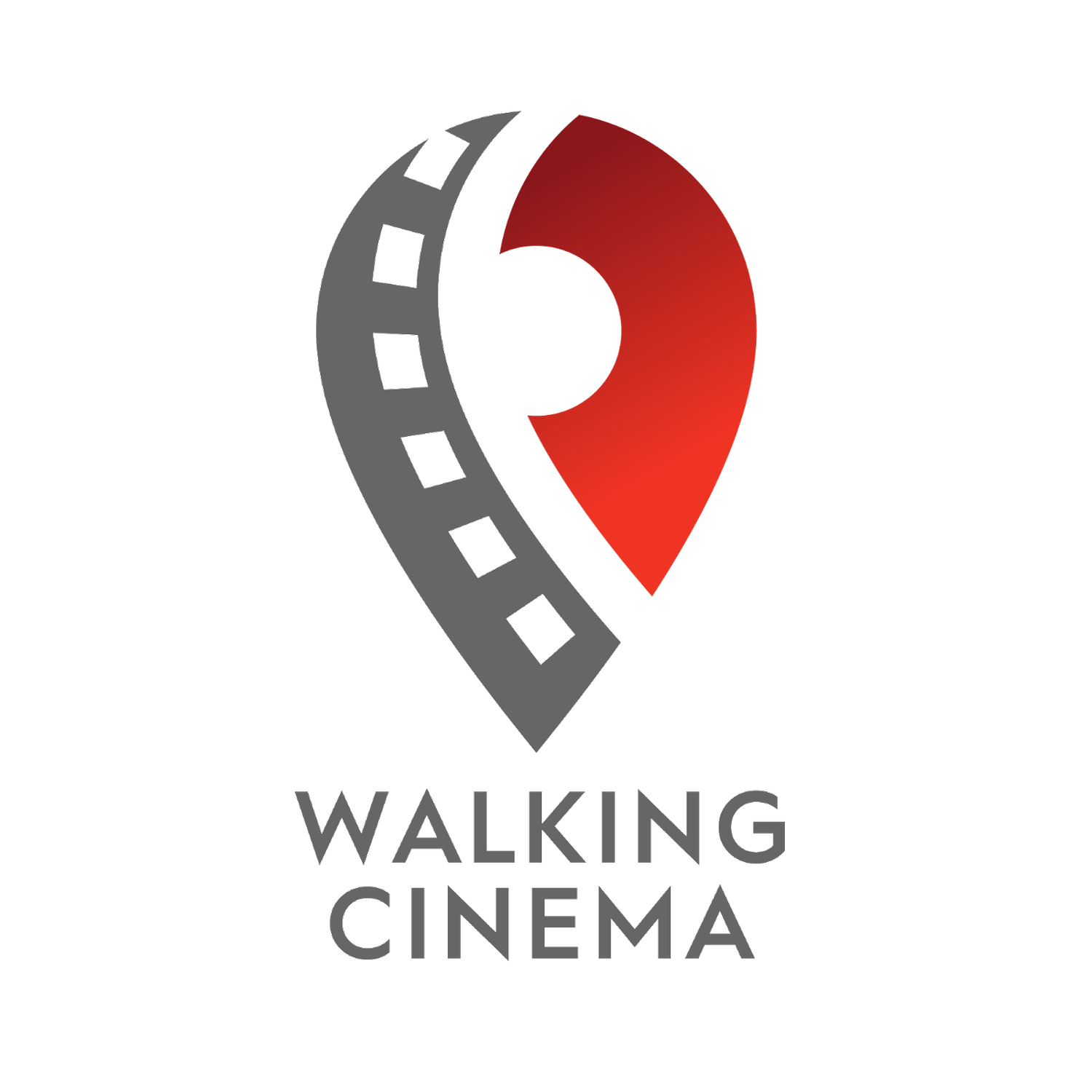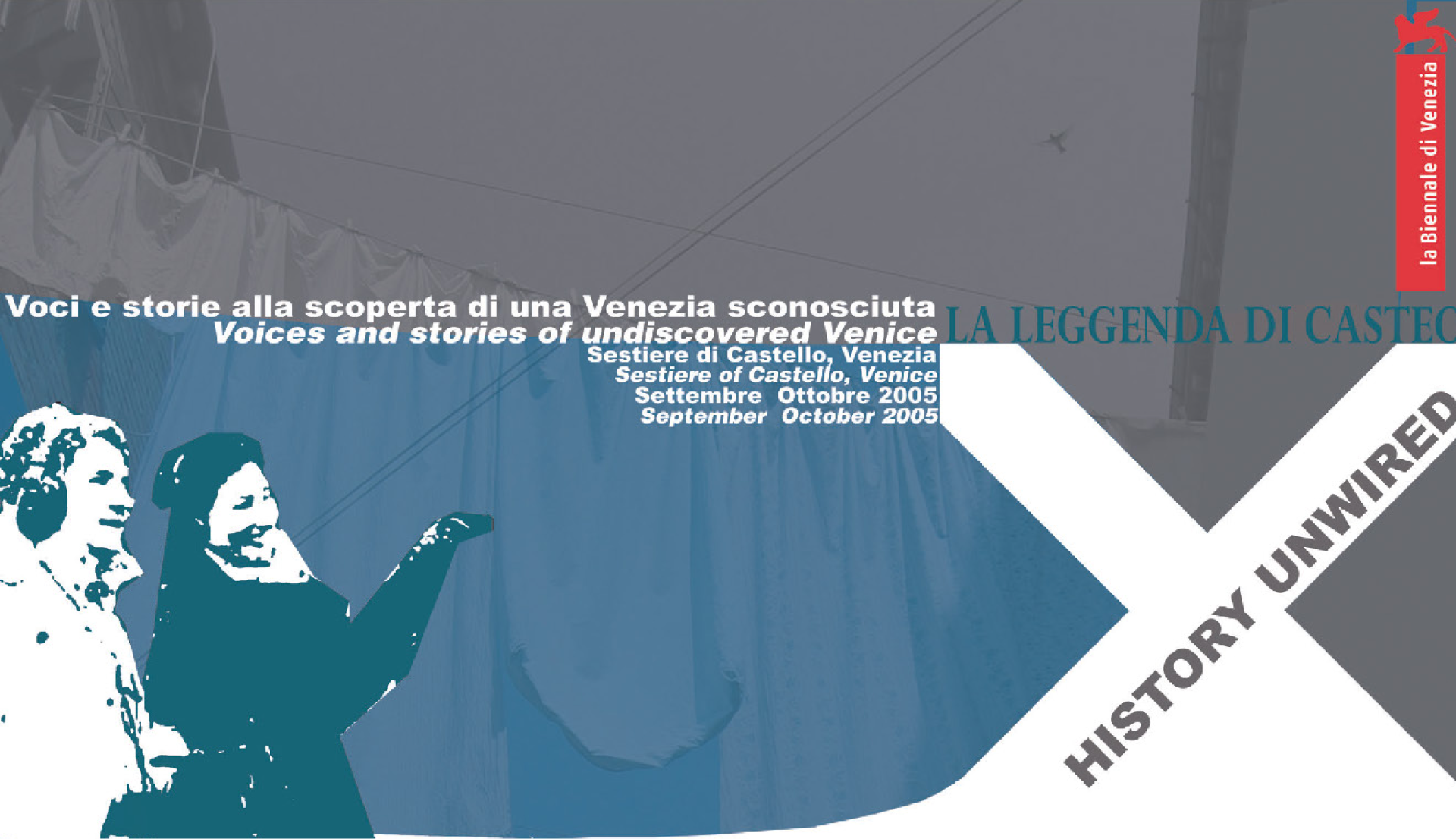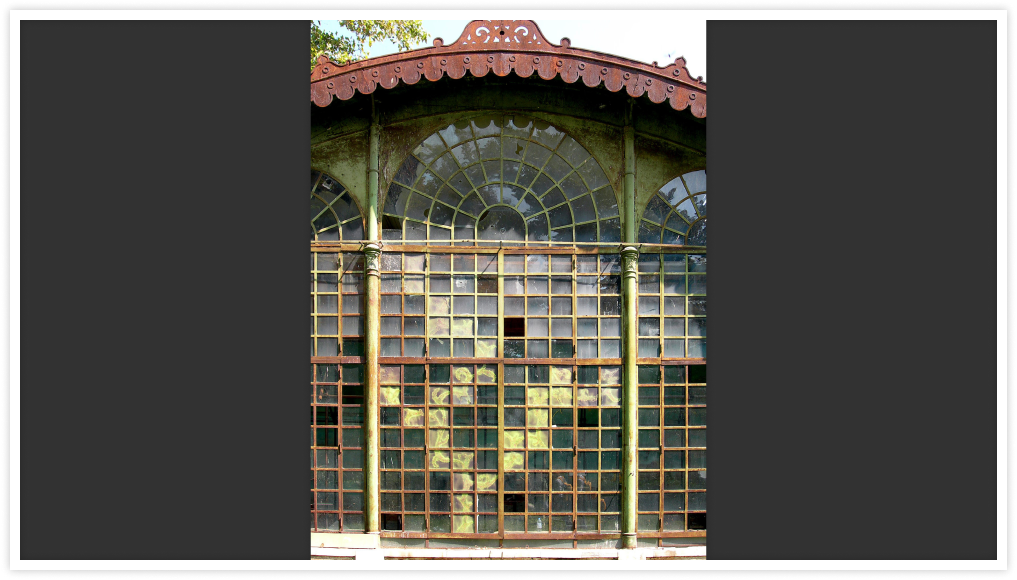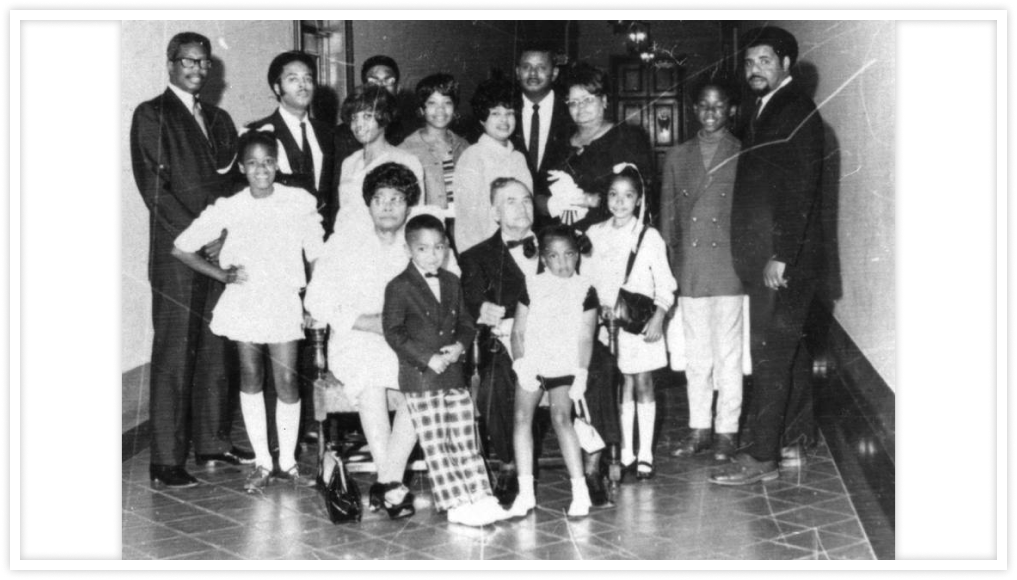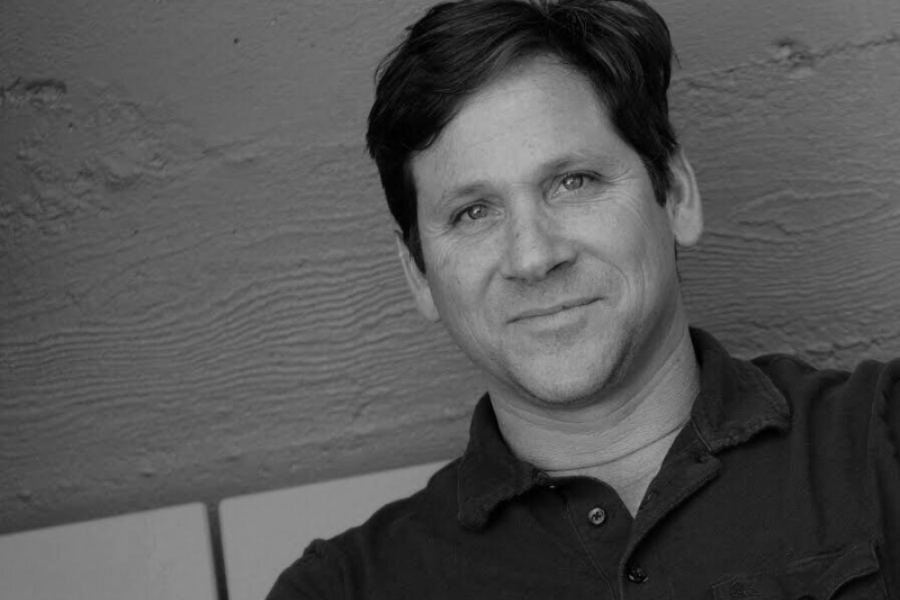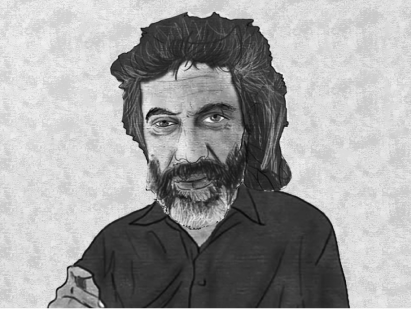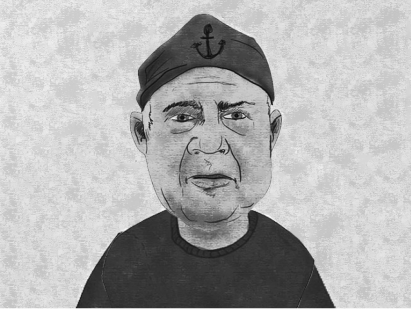Exploring the tensions between local craft and contemporary art in Venice’s last working class neighborhood.
In 2004, a small team of researchers from MIT and the University of Venice set out to create an experimental documentary literally set in the streets of Venice, Italy. Walking Cinema founder Michael Epstein worked with an inspired team of filmmakers, designers, and sociologists to see if mobile technology might unlock a new way of sensitively exploring an overrun tourist destination like Venice. The result was called “History Unwired: The Legend of Casteo” and focused on the Castello neighborhood is often overlooked by the millions of visitors who come there for the Venice Biennale festival.
The story presents 5 vignettes of craftsmen who live and work in Castello: a gondola builder, a fisherman, a glass blower, a flaneur, and a ska musician. Their approach to art is contrasted with the heady, trendy roots of the Biennale. What emerges is a slower, surprisingly intimate experience of Venice’s blue collar identity in a neighborhood overrun by an elite festival half the year.
Produced in partnership with the University of Architecture Venice, The Venice Biennale, Motorola, and Dell. Sponsored by a grant from the Regione Veneto.
Impact
Project featured in the 2005 Venice Architecture Biennale and then licensed by the Biennale as an ongoing experience
Bridged the local-tourist divide via bilingual, site-specific storytelling that revealed overlooked gems and a tension between local and global creativity
First “location-based documentary” featured in academic journals and international press such as the Corriere della Sera, Wired Magazine, and MIT Technology Review
Winner of a $150,000 innovation grant from the Regione Veneto to explore how tourists can become “dynamic citizens.”
About the Experience
Defining a new form of documentary film
How might place become part of the experience of a documentary project? As mobile phones were emerging as location-aware, high definition media devices in the early 2000s, this question seemed prescient. History Unwired intended to explore this question in one of the most walkable cities on the planet: Venice, Italy.
Based on the concept that audio should be the basis of walkable media–as it makes the world around you the visual for the story–this project started with walking audio interviews with various locals: historians, artists, contrarians, performers, and business owners. From these walks, we found a central tension between retaining and innovating local culture. We also explored the ways the environment could be manipulated to play along with the stories being told. Small installations, video overlays, and focus on key details in the architecture, graffiti, and signage made the walking experience half podcast and half treasure hunt.
What eventually emerged were five 10-15 minute connected vignettes of local artisans trying to bridge the gap between local traditions and creative expansion. The storytelling is linear, but there are certain points where the audience can choose to go deeper into a story or site or skip ahead to the next story. The experience overall lasted between one and two hours depending on the shortcuts and offline experiences the audience chooses.
Technology
The tour was developed in a time “pre-app-store.” So it was installed on GPS-enabled mobile devices donated from Dell and Motorola and distributed on rental devices in a custom-built kiosk at the entrance to the Biennale. This gave our technology partners an opportunity to explore new tourism applications for their devices at scale.
Over 100 interviews were conducted with participants and the results were presented at several tourism technology conferences. The project also experimented with GPS as a way to trigger content. Given satellite shade in Venice’s narrow streets, we built in a backup system that used audio position in the tour locate the user on an animated map. This worked incredibly well in testing. We also incorporated branching narratives, allowing users to choose their path at certain points like a choose-your-own-adventure story. This was helpful for audiences in a hurry, but didn’t add a lot of narrative impact and increased the amount of content we needed to produce. Overall, the project created the technical foundation for our “Mobile Narrative System” which received follow-on funding from NSF and private investors.
GPS
Audio Tour
Media Sample
This video clip introduces the overall concept of a tour that will take you to less traveled parts of Venice. It’s based on a real tourism map we found that cut out the Castello neighborhood, as if there were nothing to see there. The tour allows you to explore that lost fragment of the map and also combat the mass tourism in the city that concentrates tourists in a sort of “trough” between the Rialto Bridge and St. Mark’s Square.
Animation and Video Editing by Matteo Masin
Written by Michael Epstein
Photo Gallery
Talent
Michael Epstein, Director, Narrator, Writer
Michael is the creative force behind this project. He spent 12 months living in Venice to build this project. This was the first large-scale location-based documentary he (or anyone) made.
Filippo Dal Fiore, Project Manager
Filippo is a scientist and a humanist who loves to observe and reflect on our social world. He believes that only by dismantling assumptions and prejudices we human beings can truly build truthfulness and authenticity.
Dario Pinton, Art Critic
Dario is an art critic, flaneur around Venice, and a revolutionary who believes that art should challenge established beliefs. In the tour, he takes audiences through the garden around the Biennale as an act of defiance.
Marco Forieri detto "Il Furio", Narrator
Marco is ska musician who has received international recognition for his hits in Italian and Venetian dialect. He brings us close the traditional foods and public housing.
Fabio Fornasier, Narrator
Fabio is a third generation glass blower from Murano who specializes in erotic and devilish glass designs. He discusses how he rebelled against his father and was punished with the task of blowing glass.
Alberto Garbizza, Narrator
Berto takes us deep into the Island of San Pietro and introduces us to the craft of Lagoon fishing. He brings to life the history of Venice, especially its operatic underpinnings and his own ways of worshiping the stones of Venice.
Gianfranco Vianello detto "Il Crea", Narrator
Crea wraps up the tour with his stories of handcrafting gondolas in his factory. It is a time-honored tradition and an artform that is appreciated around the world.
Press & Articles
Venice Unwired
The torture of seeing films intended for 30ft cinema screens being squeezed into a 2.5in space has done nothing to deter millions of iPod users from downloading those burnt...
Il Turista e Sempre piu Mobile
Whoever wants to go deeper with their understanding of Venice in person can explore “History Unwired,” a multimedia guide dedicated to the Castello quarter....
Visitas Multimedia
Michael Epstein calls the project a “transmedia” extension of the original film. “The idea wasn’t to just reuse the film,’ he says, “but to extend the story...
First iPhone App to Feature in a
Film FestivalMichael Epstein Castello Walk on “5 Takes Europe”
A reality travel show interviewed Michael Epstein about Castello and the side of Venice most tourists don’t see…
Venice Unmasked
As far as anyone knows, it’s a first in movie history, a location-based iPhone application has been accepted as an entry at a major film festival…
Digital Options Lighten the Load for Tourists
This kind of guide can lead to a lot of social impact," Epstein said. "It can lead to more fulfilling travel and more ongoing relationships with the cities that you travel to…
Credits
A PROJECT BY:
Michael Epstein, as the Creative Director Filippo Dal Fiore, as the Project Manager
FEATURING:
Dario Pinton
Marco Forieri detto “II Furio” Fabio
Fornasier
Alberto Garbizza
Gianfranco Vianello detto “II Crea”
prof. Pierluigi Sacco, Academic Head
Cristobal Garcia, History Unwired Founding Member
VENICE TEAM:
Silvia Vergani, Community Outreach Developer
Viviana Carlet, Communication and Production Assistant Emilio
Fantin, Artistic Consultant
Matteo Masin, Animation and Interface Design
Andrea Scantamburlo, Interface Design & Production Assistant
Riccardo Vianello, Flash Programming & Interface
Marco Zampieri, Video Production Roberto
Grossa, Production Studio Head Matteo Bacelle,
Web Designer
MIT TEAM:
prof. Dennis Frenchman, Academic Director
Carlo Ratti, MIT Team Director
Talia Dorsey and Shuji Suzumori, Distribution
Point Design
Vanessa Bertozzi, Video Production
Amanda Parkes & Jussi Angelsleva, Interactive
Art Installations
Enrico Costanza, Bluetooth Development
Anne Dodge, Video Consulting
Sarah Driscoll 4elly, Course Development
David Skelly, Animation Consultant
SPECIAL THANKS TO:
Arabella Adamo
Antonella Agazzi
prof. Giovanni Anceschi
prof. Edward Barret
Monica Bettini
Alvise Bittente
Simona Bruschi
Circolo Anziani di Castello
Circolo Podistico Odeon
Sandro and Renata Dal Fiore
prof. Daniele Del Giudice
prof. Marco De Michelis
Ludovico De Luigi
Eleonora Di Maria
Cinzia Di Rado, Fred and Sara Epstein
Martina Flaborea
Phil Fleming
Tad Hirsch
Michele Lazzarini
Victoria Lee
Giancarlo Levorato
Guido Leon
Speed Levetgh
Guido Luis
Francesco Magri
Filippo Mastinu
Giuseppe Mella
prof. Stefano Micelli
Andrea 6icoletti
Wolfgang Obermeyer
prof. Renato Padoan
Lucia Pecoraro
Chiara Pesatoriprof. Cesare Pietroiusti
Matteo Povolato
Mayumi Rai
Galleria Ravagnan
Luisella Romeo
Alessandra Santerini
Laura Scarpa
Serenella Sferza
Panificio da Spanio
Squero Elefante
prof. John Stilgoe
Trattoria dai Tosi
Luca Vascon
Stefano Zatti
Orlando Zennaro
